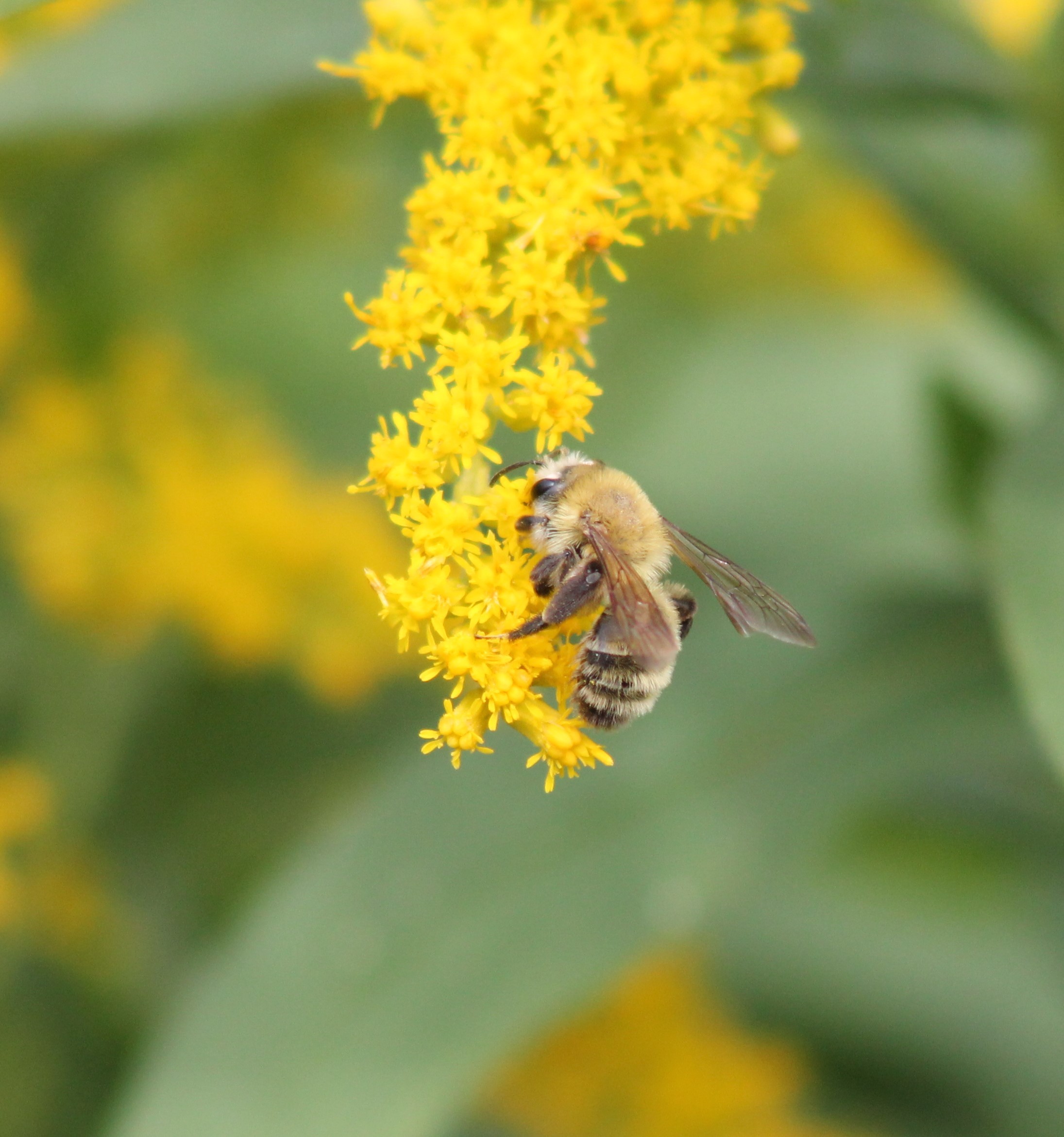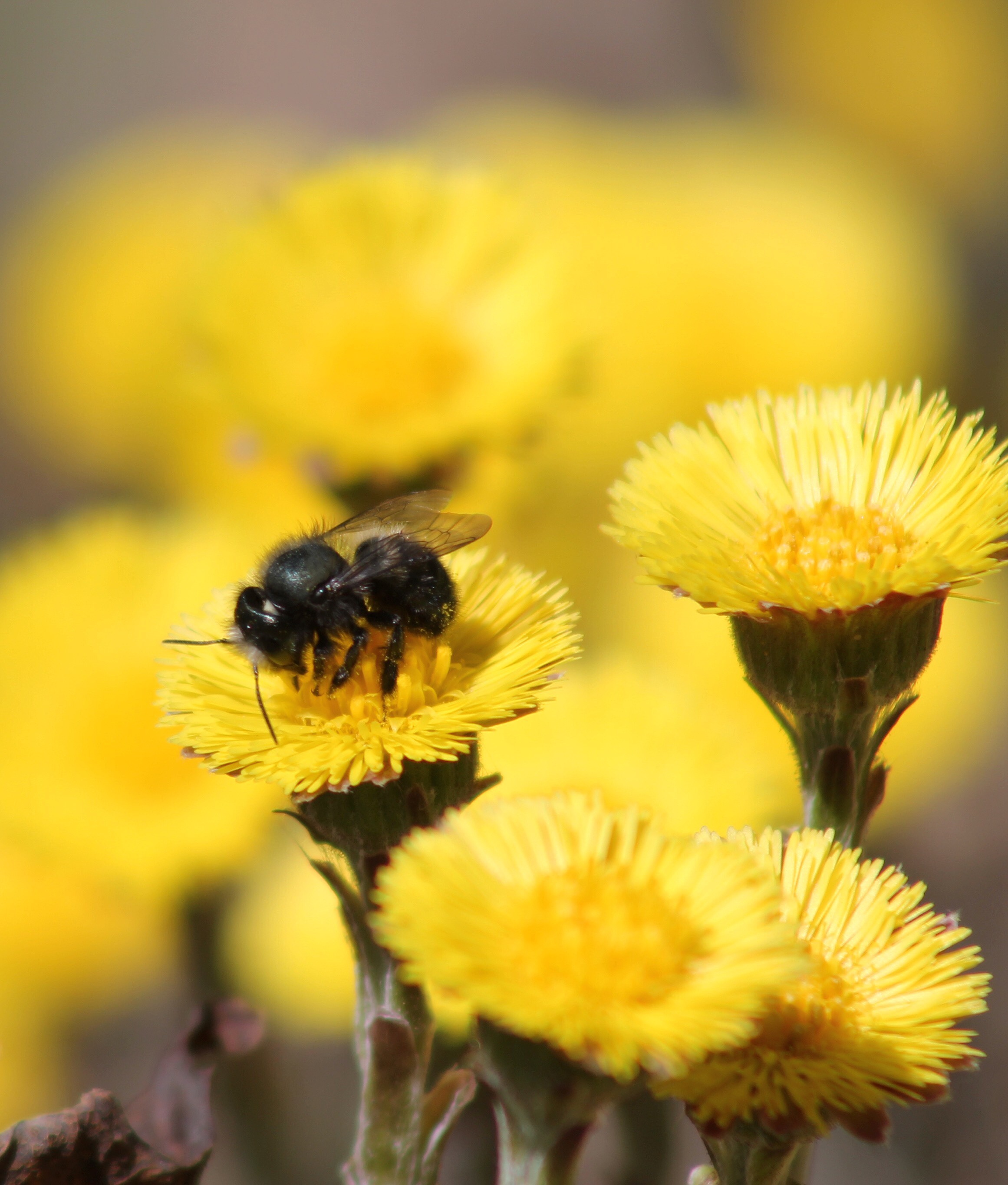No Fear of Stings!
Andrena mining bee, Anthony Colangelo

By Anthony Colangelo, Pollinator Partnership
Bees are some of the coolest and most amazing little organisms in the insect world, playing a key role in maintaining the Earth’s biodiversity, and an important role in our entire human existence. Not only do they pollinate many types of plants that are essential for the environment and are a food source for many different insects, mammals, and birds, but they also pollinate many colourful fruit and vegetable crops that we depend on and enjoy eating.
Despite their vital role in the ecosystem and their pollination services for humans, many people fear bees, possibly because of past experiences with stings, or maybe even from false and sensationalized information about their aggressiveness. This information usually consists of bees being mistaken as their aggressive wasp cousins (which are also important pollinators too!).
Bombus bumble bee, Anthony Colangelo
Bees are actually very gentle creatures whose only desire is to fly from one flower to the next in search of pollen and nectar food for themselves and their developing larvae. In fact, less than half of the bees in the world are actually capable of stinging, and even the ones that do sting only use this defense mechanism as a last resort.
Megachile leafcutting bee, Anthony Colangelo
The bees that are capable of stinging are mostly the social species such as honey bees and bumble bees, who have stingers in order to protect their nests and keep their colony safe. Even in honey bees and bumble bees, only the females are able to sting, and to avoid being stung it is recommended to keep a distance of 10 to 20 feet away from honey bee or bumble bee nests. If you are not near a nest and are simply observing these bees on a patch of flowers, the chances of being stung are highly unlikely unless bees are physically handled and feel threatened, or accidentally get caught in clothing.
Our solitary native bees are even gentler in nature, as they do not have colonies to defend and do not react aggressively when nests are approached. Bees are often so distracted when visiting flowers and feeding on pollen and nectar that they can safely be approached, even within a few inches to be observed!
Osmia mason bee, Anthony Colangelo

To avoid stings, give social bees such as honey bees and bumble bees their space when near a colony, and avoid touching bees when observing them when they are visiting flowers. Also, make sure to watch where you are stepping when out in nature, as stepping on low-rise weeds with bees on them could result in getting stung.
Bees are some of the best visitors to have in local gardens and agricultural landscapes because of their incredible pollinating abilities. Next time you are in your garden or out for a hike, have no fear of stings and check out just how beautiful and diverse these little creatures are as they cover themselves in pollen and consume each flower’s sweet nectar!
